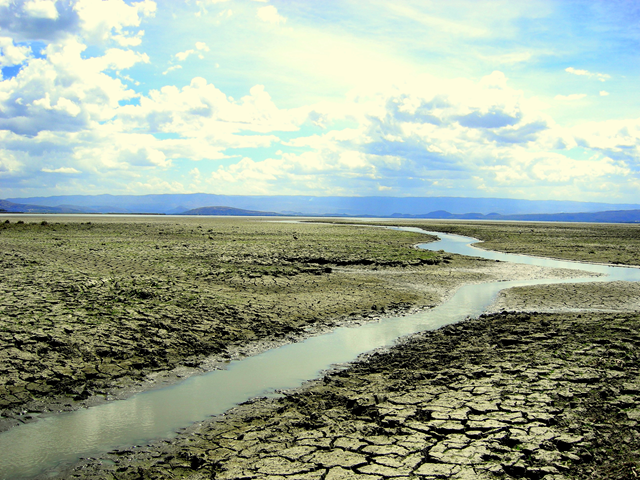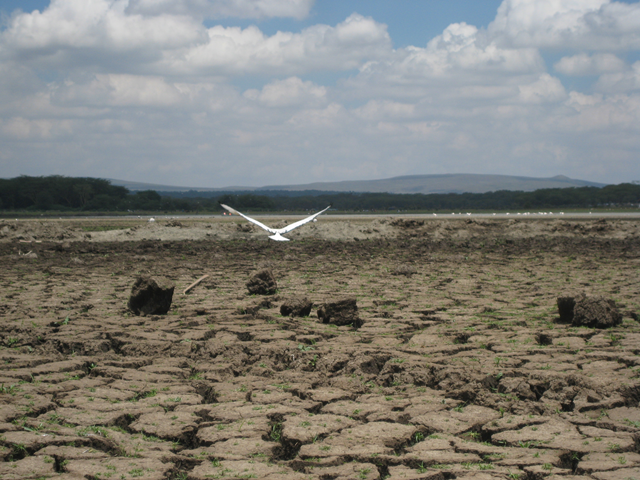Drought, agriculture, and pollution are rapidly destroying Kenya's Lake Naivasha
By Jeremy Hance, www.mongabay.com
March 10, 2010 Heavily polluted and shrinking, Lake Naivasha is in dire trouble. Environmentalists say the cause is clear: flower farms. Some 60 flower farms line the entire lakeside, growing cut flowers for export largely to the EU. While the flowers industry is Kenya’s largest horticultural export (405.5 million last year) it may have also produced an environmental nightmare. Heavily polluted and shrinking, Lake Naivasha is in dire trouble. Environmentalists say the cause is clear: flower farms. Some 60 flower farms line the entire lakeside, growing cut flowers for export largely to the EU. While the flowers industry is Kenya’s largest horticultural export (405.5 million last year) it may have also produced an environmental nightmare.
Environmentalists say that flower farms have taken water from the lake for irrigation and then dumped pesticide-waste back into the lake. Long-ignored by policymakers, the situation has recently reached a head due to thousands of fish and other freshwater organisms perishing in the lake. Fishing, once common in the lake, has since been banned. Samples of the water, fish, and sediments have been taken by government agencies for testing. If it turns out that the flower farms are responsible for the lake’s pollution problems, the government could revoke farm licenses. A preliminary inquiry has already linked the flower farms to the lake’s troubles stating that the fish mortality was likely caused by low levels of dissolved oxygen. The lake is also shrinking due to a variety of factors: over-irrigation from the farms, water requirements for nearby Naivasha town, and climate change. Lake Naivasha is also a major tourism spot in Kenya.
Flower farms may be killing Kenya’s Lake Naivasha


Oh let's not discuss the real price of those lovely fresh flowers and those tout mange peas from Waitrose, darling!